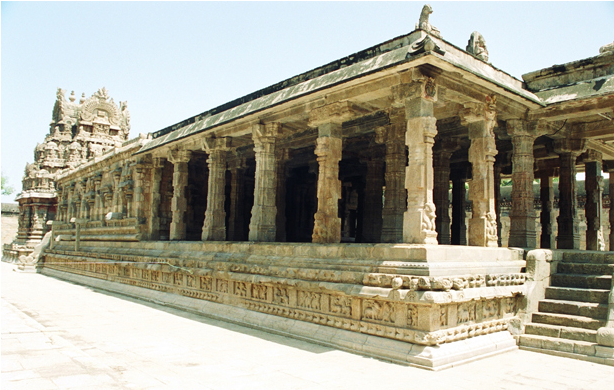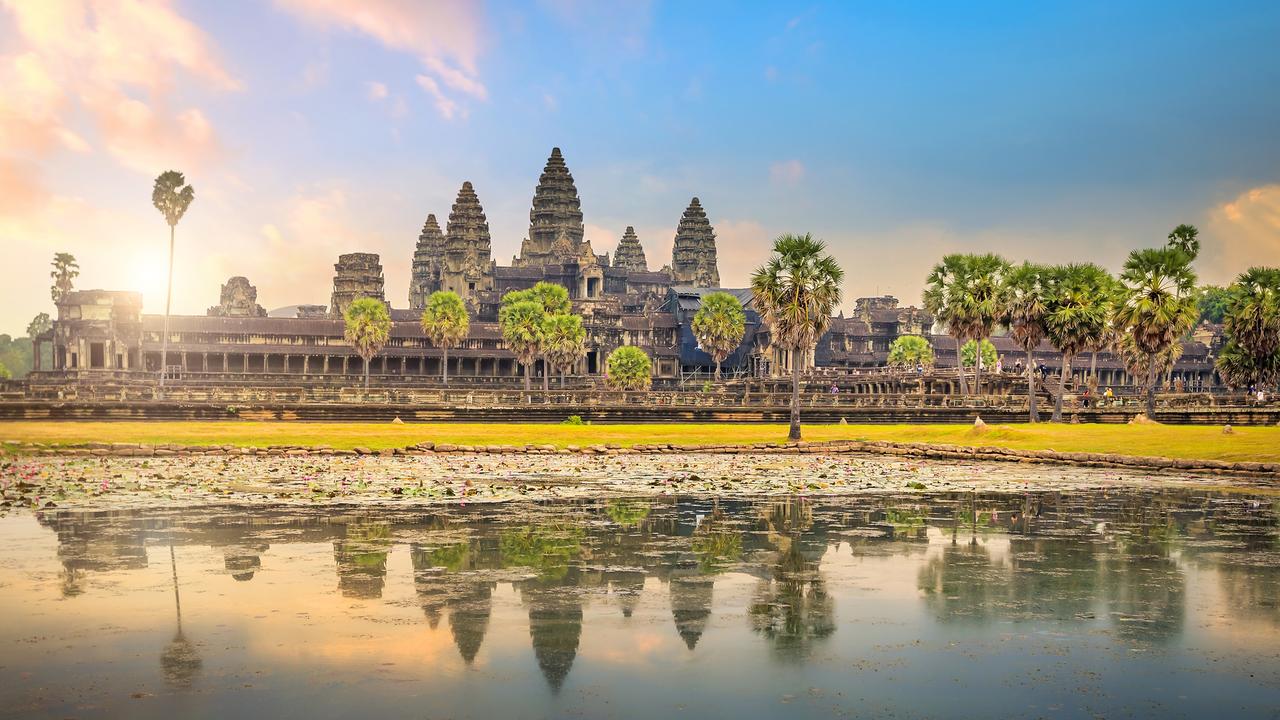|
Dindigul Fort
The Dindigul Fort or Dindigul Malai Kottai and Abirami amman Kalaheswarar Temple was built in 16th-century by Madurai Nayakar Dynasty situated in the town of Dindigul in the state of Tamil Nadu in India. The fort was built by the Madurai Nayakar king Muthu Krishnappa Nayakar in 1605. In the 18th century the fort passed on to Kingdom of Mysore (Mysore Wodeyars). Later it was occupied by Hyder Ali and Tipu Sultan the fort was of strategic importance. In 1799 it went to the control of the British East India Company during the Polygar Wars. There is an abandoned temple on its peak apart from few cannons sealed with balls inside. In modern times, the fort is maintained by the Archaeological Survey of India and is open to tourists. Etymology Dindigul city derives its name from a portmanteau of ''Thindu'' a Tamil word which means a ledge or a headrest attached to ground and ''kal'' another Tamil word which means Rock. Appar, the Saiva poet visited the city and noted it in his work ... [...More Info...] [...Related Items...] OR: [Wikipedia] [Google] [Baidu] |
History Of Tamil Nadu
The region of Tamil Nadu in the southeast of modern India, shows evidence of having had continuous human habitation from 15,000 BCE to 10,000 BCE. Throughout its history, spanning the early Upper Paleolithic age to modern times, this region has coexisted with various external cultures. The three ancient Tamil dynasties namely Chera Empire, Chera, Chola Empire, Chola, and Pandyan Empire, Pandya were of ancient origins. Together they ruled over this land with a unique culture and language, contributing to the growth of Sangam Literature, some of the oldest extant literature in the world. These three dynasties were in constant struggle with each other vying for hegemony over the land. Invasion by the Kalabhras during the 3rd century disturbed the traditional order of the land, displacing the three ruling kingdoms. These occupiers were overthrown by the resurgence of the Pandyas and the Pallavas, who restored the traditional kingdoms. The Cholas who re-emerged from obscurity in ... [...More Info...] [...Related Items...] OR: [Wikipedia] [Google] [Baidu] |
Pallavas
The Pallava dynasty existed from 275 CE to 897 CE, ruling a significant portion of the Deccan, also known as Tondaimandalam. The dynasty rose to prominence after the downfall of the Satavahana dynasty, with whom they had formerly served as feudatories. The Pallavas became a major South Indian power during the reign of Mahendravarman I (600–630 CE) and Narasimhavarman I (630–668 CE), and dominated the southern Andhra Region and the northern parts of the Tamil region for about 600 years, until the end of the 9th century. Throughout their reign, they remained in constant conflict with both the Chalukyas of Badami in the north, and the Tamil kingdoms of Chola and Pandyas in the south. The Pallavas were finally defeated by the Chola ruler Aditya I in the 9th century CE. The Pallavas are most noted for their patronage of Hindu temple architecture, the finest example being the Shore Temple, a UNESCO World Heritage Site in Mamallapuram. Kancheepuram served as the c ... [...More Info...] [...Related Items...] OR: [Wikipedia] [Google] [Baidu] |
Maruthu Pandiyar
The Marudhu Pandiyars (Periya Marudhu and Chinna Marudhu) were Diarchal Kings of Sivagangai, Tamil Nadu, India, towards the end of the 18th century. They were known for fighting against the East India Company. They were finally executed by the EIC after being captured by them. Childhood Periya and Chinna Marudhu, sons of Mookiah Palaniappan Servai was native of Mukkulam, near Narikudi which was 18 miles away from Aruppukottai. Their mother Anandhayee alias Ponnathal was native of Pudhupatti near Sivagangai. Both the Brothers were born at Mukkulam in the year 1748 and 1753 respectively. The first son was named as Vellai Marudhu alias Periya Marudhu and the second son as Chinna Marudhu. Rebellion In 1772, British East India company had killed Muthuvaduganatha Thevar over his refusal to pay taxes. However Marudhu Pandiyar and Queen Velunachiyar escaped, and stayed with Gopala Nayak in Virupatchi for 8 years. After this time, an alliance of kingdoms led by the Pandiyar attacked ... [...More Info...] [...Related Items...] OR: [Wikipedia] [Google] [Baidu] |
Velu Nachiyar
Rani Velu Nachiyar (3 January 1730 – 25 December 1796) was a queen of Sivaganga estate from 1780–1790. She was the first Indian queen to wage war with the East India Company in India. Remembering Queen Velu Nachiyar of Sivagangai, the first queen to fight the British ''The News Minute''. 3 January 2017 She is known by as ''Veeramangai'' ("brave woman"). With the support of 's army, feudal lords, the Maruthu Brothers, |
French India
French India, formally the ( en, French Settlements in India), was a French colony comprising five geographically separated enclaves on the Indian Subcontinent that had initially been factories of the French East India Company. They were ''de facto'' incorporated into the Republic of India in 1950 and 1954. The enclaves were , Karikal, Yanaon (Andhra Pradesh) on the Coromandel Coast, Mahé on the Malabar Coast and Chandernagor in Bengal. The French also possessed several ('lodges', tiny subsidiary trading stations) inside other towns, but after 1816, the British denied all French claims to these, which were not reoccupied. By 1950, the total area measured , of which belonged to the territory of . In 1936, the population of the colony totalled 298,851 inhabitants, of which 63% (187,870) lived in the territory of Pondichéry. Context France was the last of the major European maritime powers of the 17th century to enter the East India trade. Six decades after ... [...More Info...] [...Related Items...] OR: [Wikipedia] [Google] [Baidu] |
Polygar
Palaiyakkarars, or Poligar, (as the British referred to them) in Tamil Nadu refers to the holder of a small kingdom as a feudatory to a greater sovereign. Under this system, ''palayam'' was given for valuable military services rendered by any individual. The word ''pālayam'' means domain,a military camp, or a small kingdom. This type of Palayakkarars system was in practice during the rule of Pratapa Rudhra of Warangal in the Kakatiya kingdom. The system was put in place in Tamilnadu by Viswanatha Nayaka, when he became the Nayak ruler of Madurai in 1529, with the support of his minister Ariyanathar. Traditionally there were supposed to be 72 Palayakkarars.The majority of those Palaiyakkarar, who during the late 17th- and 18th-centuries controlled much of the Telugu region as well as the Tamil area, had themselves come from the Yadhavar, Kallar, Maravar and Vatuka, pala ekari communities. The Palaiyakkarar of Madurai Country were instrumental in establishing administrative ... [...More Info...] [...Related Items...] OR: [Wikipedia] [Google] [Baidu] |
Tipu Sultan
Tipu Sultan (born Sultan Fateh Ali Sahab Tipu, 1 December 1751 – 4 May 1799), also known as the Tiger of Mysore, was the ruler of the Kingdom of Mysore based in South India. He was a pioneer of rocket artillery.Dalrymple, p. 243 He introduced a number of administrative innovations during his rule, including a new coinage system and calendar, and a new land revenue system, which initiated the growth of the Mysore silk industry. He expanded the iron-cased Mysorean rockets and commissioned the military manual '' Fathul Mujahidin''. He deployed the rockets against advances of British forces and their allies during the Anglo-Mysore Wars, including the Battle of Pollilur and Siege of Srirangapatna. Tipu Sultan and his father used their French-trained army in alliance with the French in their struggle with the British, and in Mysore's struggles with other surrounding powers: against the Marathas, Sira, and rulers of Malabar, Kodagu, Bednore, Carnatic, and Travancore ... [...More Info...] [...Related Items...] OR: [Wikipedia] [Google] [Baidu] |
Hyder Ali
Hyder Ali ( حیدر علی, ''Haidarālī''; 1720 – 7 December 1782) was the Sultan and ''de facto'' ruler of the Kingdom of Mysore in southern India. Born as Hyder Ali, he distinguished himself as a soldier, eventually drawing the attention of Mysore's rulers. Rising to the post of Dalavayi ( commander-in-chief) to Krishnaraja Wodeyar II, he came to dominate the titular monarch and the Mysore government. He became the de facto ruler of Mysore as Sarvadhikari (Chief Minister) by 1761. During intermittent conflicts against the East India Company during the First and Second Anglo–Mysore Wars, Hyder Ali was the military leader. Though illiterate, Hyder Ali concluded an alliance with the French, and used the services of French workmen in raising his artillery and arsenal. His rule of Mysore was characterised by frequent warfare with his neighbours and rebellion within his territories. This was not unusual for the time as much of the Indian subcontinent was then in ... [...More Info...] [...Related Items...] OR: [Wikipedia] [Google] [Baidu] |
Nelson
Nelson may refer to: Arts and entertainment * ''Nelson'' (1918 film), a historical film directed by Maurice Elvey * ''Nelson'' (1926 film), a historical film directed by Walter Summers * ''Nelson'' (opera), an opera by Lennox Berkeley to a libretto by Alan Pryce-Jones * Nelson (band), an American rock band * ''Nelson'', a 2010 album by Paolo Conte People * Nelson (surname), including a list of people with the name * Nelson (given name), including a list of people with the name * Horatio Nelson, 1st Viscount Nelson (1758–1805), British admiral * Nelson Mandela, the first black South African president Fictional characters * Alice Nelson, the housekeeper on the TV series ''The Brady Bunch'' * Dave Nelson, a main character on the TV series '' NewsRadio'' * Emma Nelson, on the TV series ''Degrassi: The Next Generation'' * Foggy Nelson, law partner of Matt Murdock in the Marvel Comic Universe * Greg Nelson, on the American soap opera ''All My Children'' * Harriman Nelson, ... [...More Info...] [...Related Items...] OR: [Wikipedia] [Google] [Baidu] |
Vijayanagara Empire
The Vijayanagara Empire, also called the Karnata Kingdom, was a Hindu empire based in the region of South India, which consisted the modern states of Karnataka, Andhra Pradesh, Tamil Nadu, Kerala, Goa and some parts of Telangana and Maharashtra. It was established in 1336 by the brothers Harihara I and Bukka Raya I of the Sangama dynasty, members of a pastoralist cowherd community that claimed Yadava lineage. The empire rose to prominence as a culmination of attempts by the southern powers to ward off Perso-Turkic Islamic invasions by the end of the 13th century. At its peak, it subjugated almost all of South India's ruling families and pushed the sultans of the Deccan beyond the Tungabhadra-Krishna river doab region, in addition to annexing modern day Odisha (ancient Kalinga) from the Gajapati Kingdom thus becoming a notable power. It lasted until 1646, although its power declined after a major military defeat in the Battle of Talikota in 1565 by the combined arm ... [...More Info...] [...Related Items...] OR: [Wikipedia] [Google] [Baidu] |
Temple Atop The Dindigul Fort
A temple (from the Latin ) is a building reserved for spiritual rituals and activities such as prayer and sacrifice. Religions which erect temples include Christianity (whose temples are typically called churches), Hinduism (whose temples are called Mandir), Buddhism, Sikhism (whose temples are called gurudwara), Jainism (whose temples are sometimes called derasar), Islam (whose temples are called mosques), Judaism (whose temples are called synagogues), Zoroastrianism (whose temples are sometimes called Agiary), the Baha'i Faith (which are often simply referred to as Baha'i House of Worship), Taoism (which are sometimes called Daoguan), Shinto (which are sometimes called Jinja), Confucianism (which are sometimes called the Temple of Confucius), and ancient religions such as the Ancient Egyptian religion and the Ancient Greek religion. The form and function of temples are thus very variable, though they are often considered by believers to be, in some sense, the "house" of ... [...More Info...] [...Related Items...] OR: [Wikipedia] [Google] [Baidu] |







_from_Court_Game_of_Geography_MET_DP862917.jpg)
.jpg)
